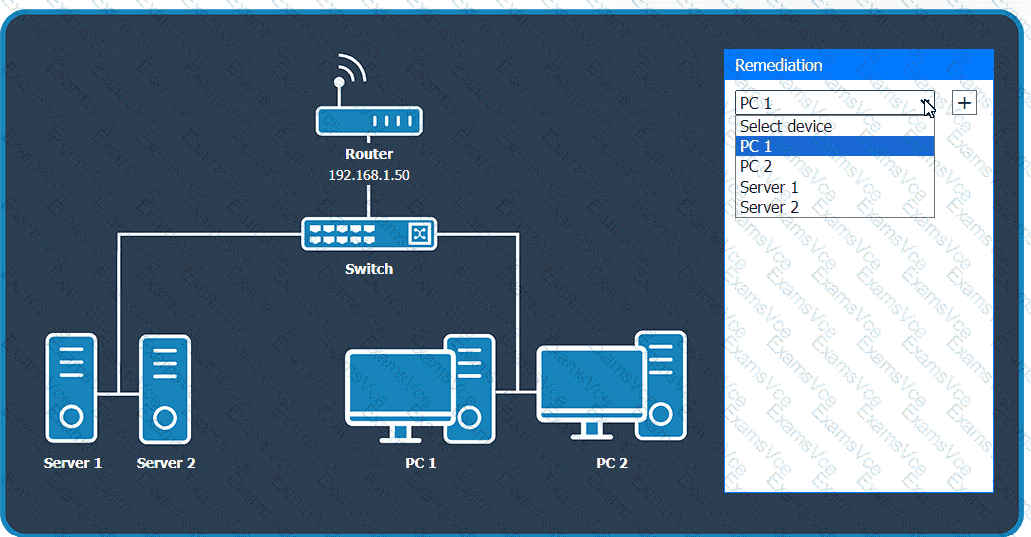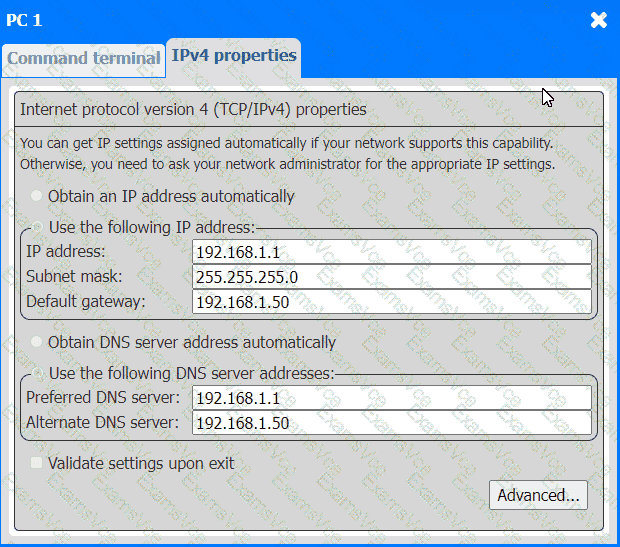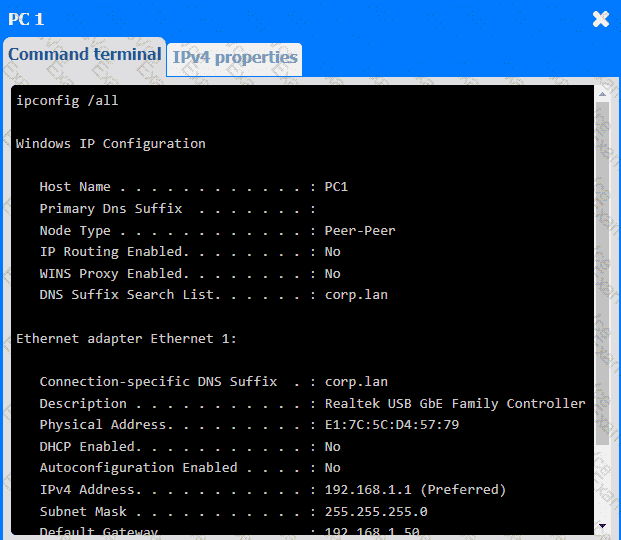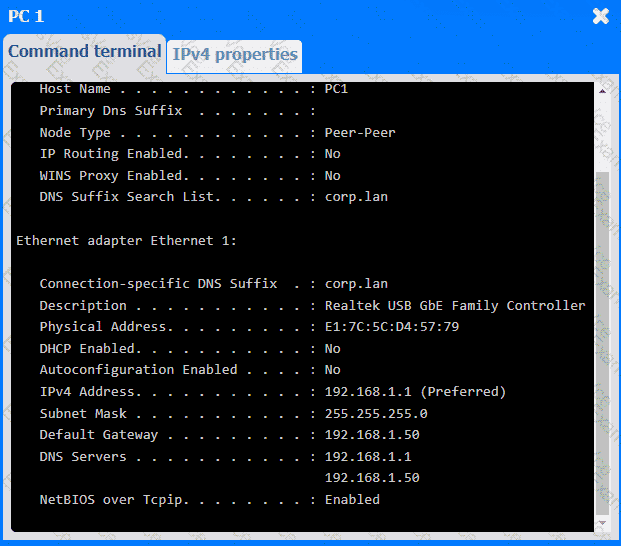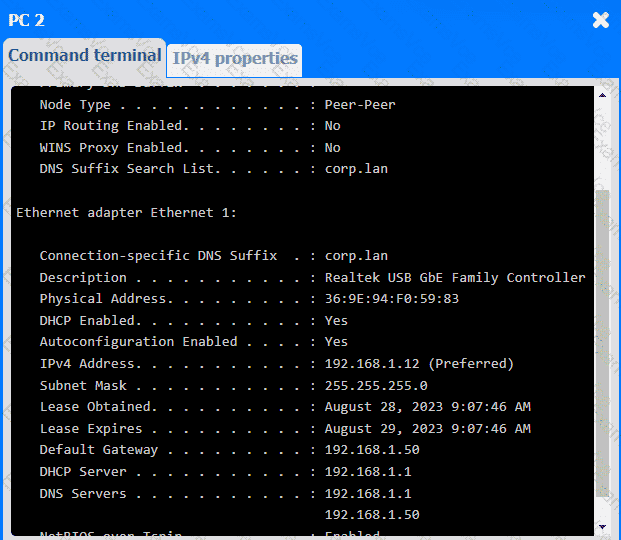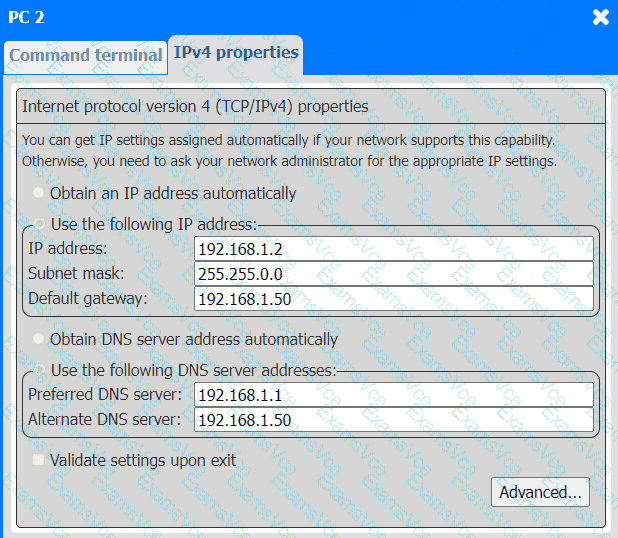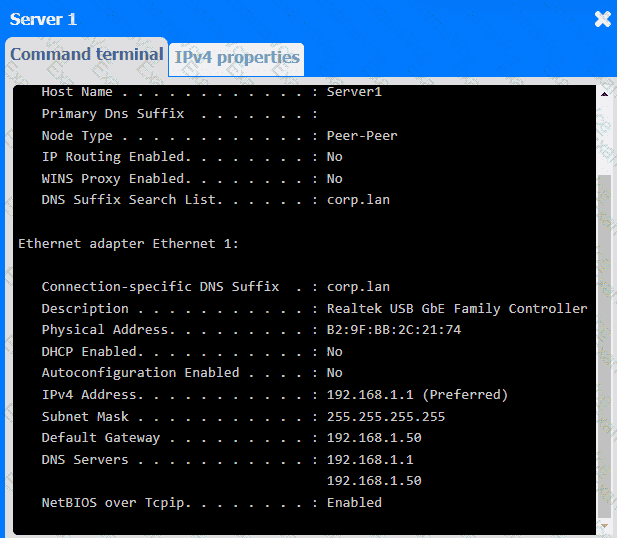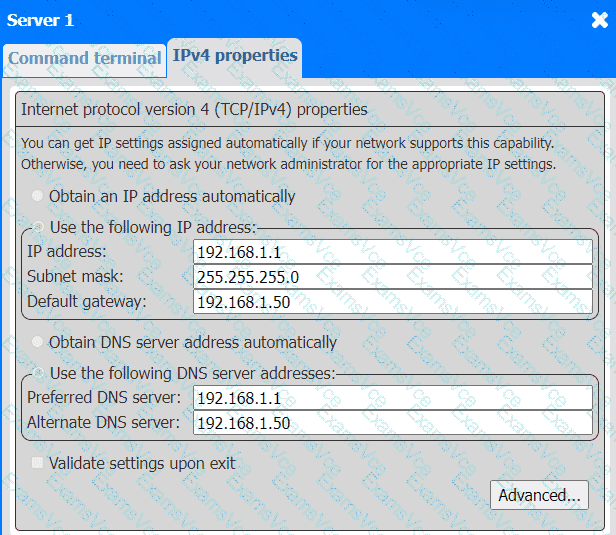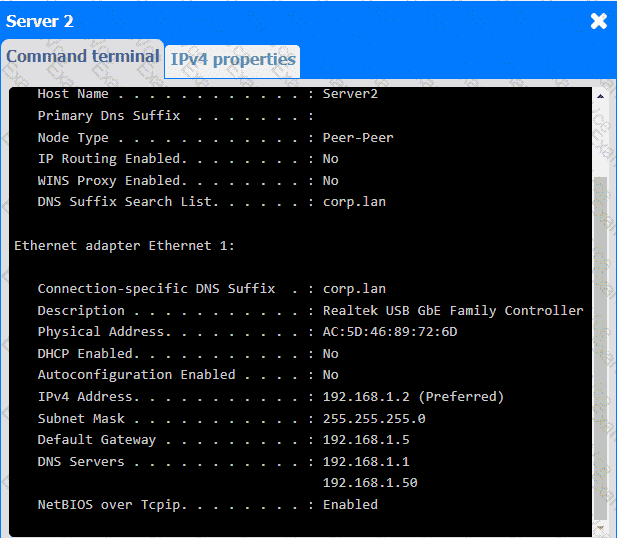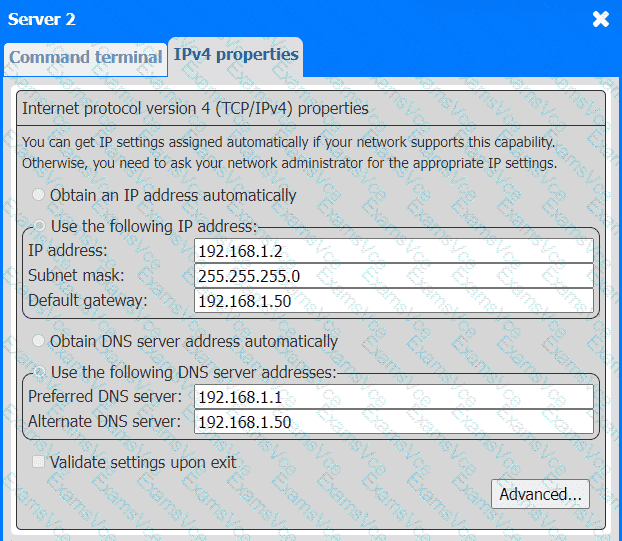Looking at the network configurations and outputs from both PCs and servers, here are the possible issues and solutions:
1. PC 1
Issue: The IP address for PC1 is 192.168.1.1, which conflicts with Server 1 (which also uses 192.168.1.1).
Solution: Change the IP address on PC1 to a unique one within the range, like 192.168.1.3.
2. PC 2
Issue: PC 2 is configured with 192.168.1.2, which conflicts with Server 2 that has the same IP address.
Solution: Update the IP address on PC 2 to something unique, like 192.168.1.4.
3. Server 1
Issue: The IP address for Server 1 is 192.168.1.1, which conflicts with PC1.
Solution: Since Server 1 and PC1 are using the same IP address, change one of them. For Server 1, you could change the IP address to 192.168.1.5.
4. Server 2
Issue: Server 2 is using the IP address 192.168.1.2, which conflicts with PC2.
Solution: Update Server 2 to use a different IP address, such as 192.168.1.6.
General Remediation:
The primary problem here is overlapping IP addresses, leading to connectivity issues. Each device on the network must have a unique IP address. After making these changes, ensure that all devices can communicate properly by testing the connection between devices and verifying they can access shared resources.
